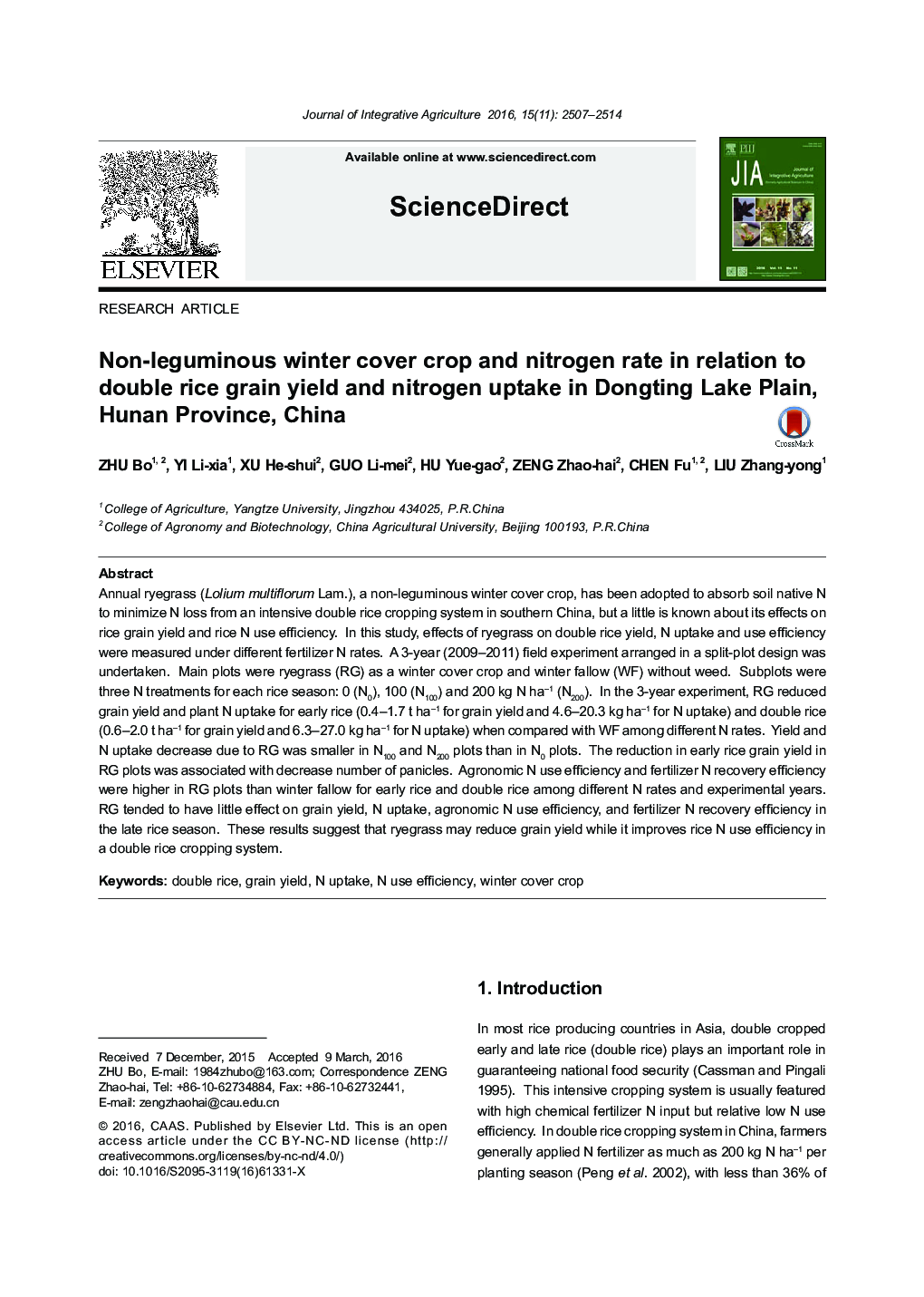| Article ID | Journal | Published Year | Pages | File Type |
|---|---|---|---|---|
| 8876205 | Journal of Integrative Agriculture | 2016 | 8 Pages |
Abstract
Annual ryegrass (Lolium multiflorum Lam.), a non-leguminous winter cover crop, has been adopted to absorb soil native N to minimize N loss from an intensive double rice cropping system in southern China, but a little is known about its effects on rice grain yield and rice N use efficiency. In this study, effects of ryegrass on double rice yield, N uptake and use efficiency were measured under different fertilizer N rates. A 3-year (2009-2011) field experiment arranged in a split-plot design was undertaken. Main plots were ryegrass (RG) as a winter cover crop and winter fallow (WF) without weed. Subplots were three N treatments for each rice season: 0 (N0), 100 (N100) and 200 kg N haâ1 (N200). In the 3-year experiment, RG reduced grain yield and plant N uptake for early rice (0.4-1.7 t haâ1 for grain yield and 4.6-20.3 kg haâ1 for N uptake) and double rice (0.6-2.0 t haâ1 for grain yield and 6.3-27.0 kg haâ1 for N uptake) when compared with WF among different N rates. Yield and N uptake decrease due to RG was smaller in N100 and N200 plots than in N0 plots. The reduction in early rice grain yield in RG plots was associated with decrease number of panicles. Agronomic N use efficiency and fertilizer N recovery efficiency were higher in RG plots than winter fallow for early rice and double rice among different N rates and experimental years. RG tended to have little effect on grain yield, N uptake, agronomic N use efficiency, and fertilizer N recovery efficiency in the late rice season. These results suggest that ryegrass may reduce grain yield while it improves rice N use efficiency in a double rice cropping system.
Related Topics
Life Sciences
Agricultural and Biological Sciences
Agricultural and Biological Sciences (General)
Authors
Bo ZHU, Li-xia YI, He-shui XU, Li-mei GUO, Yue-gao HU, Zhao-hai ZENG, Fu CHEN, Zhang-yong LIU,
